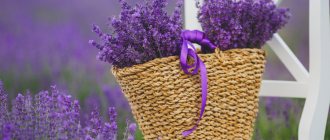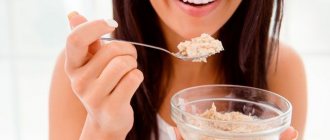The ability of some smells to influence a person’s mood and well-being has been known for a long time. Some of them invigorate and give strength, others help to cope with gloomy thoughts, others calm... The latter property is especially in demand in our hectic times, when stress awaits a person every day, regardless of age, gender and occupation. Men and women, businessmen and housewives, adults and children regularly need the opportunity to relax, relieve the stress accumulated during the day, and put their thoughts, feelings and emotions in order. And essential oils help them with this perfectly.
Subtleties of aromatherapy for children
The olfactory receptors of babies are still too sensitive to inhale the same mixtures that adults use to normalize the nervous system. Aromatherapy for the youngest family members involves the use of oils with light, unobtrusive odors that rarely provoke allergies.
It’s also not worth starting an aroma lamp, or even more so lighting all kinds of sticks and cones in the nursery. This way you will oversaturate the air with active substances, which will not have the best effect on the child’s condition. Aromatherapy for children often involves using oil massage mixtures, adding oils to bathing water, or creating scented toys - for example, a favorite teddy bunny or bear can play the role of a scented sachet if you apply a drop or two of essential oil to it. In addition, decorative figurines made of ceramics and untreated wood perfectly retain odors. Just try to scent them in a place that the child cannot touch or taste. For example, a soft toy or a toy can be ripped apart at the seam by putting cotton wool soaked in oil inside and carefully sewing it up, and a wooden or ceramic one can be left on the table next to the baby’s crib.
When you decide to use a new oil in your baby care procedures, do not forget to perform the allergy test described above.
Particular care should be taken when choosing the dosage of oils for children.
- Until the baby is 2 weeks old, there can be no talk about aromatherapy.
- A child under six months old - exclusively with the permission of the pediatrician - can be introduced to chamomile, lavender, and dill oils. In this case, 1 drop of ether per 30 g of cream, neutral base oil for massage or a full bath of water will be more than enough.
- For a baby aged 6 months to 5 years, the amount of oil can be gradually increased to 2-3 drops per the same volume of base and slowly begin to introduce neroli, myrrh, rose, benzoin, bergamot, fennel, ylang-ylang, verbena, etc. into the mixture. sandalwood, cinnamon and patchouli. From about 3–4 years old, mint can be used.
- After 6 years, children are allowed to inhale the aromas of tea tree, geranium, orange, rosemary, ginger, and thyme. The dosage is calculated by dividing the portion of the aromatic mixture for adults in half.
- After 11–12 years, the time for cloves and eucalyptus comes, and the dosage is equal to that of an adult.
Fragrances are never added directly to bathing water. The essential oil must first be dissolved in a teaspoon of flower honey (if the baby is not allergic to it), a portion of cream or mixed with special children's bath salts. If the ether gets on the skin in its pure form, it is not far from irritation or burns.
It is necessary to resort to aromatherapy in the case of small children no more than 2 times a week, while carefully monitoring the child’s condition.
Examples of baby aromatic mixtures
Too strong and pungent odors will not be good for the babies
For a sound sleep:
- 1 drop of lavender oil;
- 1 drop of chamomile oil.
For a good mood:
- 1 drop of sweet orange oil;
- 1 drop of ylang-ylang oil.
From fears and anxieties:
- 1 drop of rose oil;
- 1 drop of grapefruit oil;
- 1 drop of verbena oil.
The range of uses of essential oils in modern medicine using the example of Golden Star balm
The necessary therapeutic effect of a drug and its bioavailability are ensured not only by the pharmacological action of the drug, but also by the dosage form (DF) chosen for their creation and use [1]. Official herbal preparations, which have significantly fewer side effects, can be considered as an alternative therapy or used to enhance the effectiveness of prescription drugs. Medicines (medicines) obtained on the basis of medicinal plant raw materials (MPS) are usually called “medicines of plant origin” (MSRP). A fairly common class of drugs obtained on the basis of MP are oils—essential oils (EOs) and vegetable fatty oils. Oils are most often used as a starting or intermediate product for the production of LSRP and are characterized as pharmaceutical substances or pharmaceutical excipients [1].
Separate requirements for the quality of specific names of packaged medicinal products are specified in private pharmacopoeial monographs (FS) for medicinal products included in the State Pharmacopoeia of the USSR X ed. (GF X) [2], State Pharmacopoeia of the USSR XI ed. (GF XI) [3], in the regulatory documentation of manufacturers. LSRP are included in the Register as “drugs of herbal origin” indicating the pharmacological action: “choleretic of herbal origin”, “sedative of herbal origin”, etc. LSRP are available in more than 50 pharmacological groups of the Register, including: expectorants, general tonics , antispasmodic, sedative, laxative, choleretic, diuretic, astringent, etc. The drugs presented in these groups are registered in the form of various dosage forms. In the domestic pharmacopoeia, the characteristics of essential oils are given in article 471 of the State Fund X “Essential oils” (Olea aetherea): “Essential oils are a mixture of volatile fragrant substances belonging to various classes of organic compounds. The main components of essential oils are terpenes and their oxygen-containing derivatives, and less commonly, aromatic and aliphatic compounds. EOs are obtained from various plant organs by distillation with water or steam, extraction with organic solvents, pressing and other methods” [1]. The European Pharmacopoeia (EP) has a general monograph 01/2008:2098 “Essential oils. Aetherolea”; The monograph of the British Pharmacopoeia is identical to the EP. According to this monograph: “Essential oils are odorous drugs, usually of complex composition, obtained from medicinal plants by steam distillation, dry distillation, or suitable mechanical effects without heating” [4]. GF X included three private pharmacopoeial articles for essential oils: eucalyptus, peppermint, purified turpentine oil (turpentine).
The study of biological activity and the possibility of using essential oils for medicinal purposes was widely carried out in the laboratory of the Crimean Research Institute named after. I. M. Sechenov. In the course of research, it was found that essential oils and their components easily pass through the epithelium of the capillaries, they freely cross the placenta. With the help of transport carrier molecules located in biological membranes, molecules of aromatic substances penetrate cell membranes and interact with receptors of intracellular biological complexes. They interact with the enzyme, endocrine, immune and other systems [5]. Complex mixtures of fragrant substances (essential oils) are most often classified as monoterpenes and sesquiterpenes based on their chemical structure, but they can also be phenolic compounds. By their physical nature, they are mobile oily liquids that evaporate without leaving greasy stains and mix well with alcohols and fatty oils. They do not mix with water, but are capable of distillation with water vapor [6]. The global assortment of major essential oil plants includes about 30–40 species, the most important among them are species of genera that include not only monocyclic monoterpenes, but also their precursors, acyclic monoterpenes: geraniol, linalool, citronellol, etc. [7]. In modern medical practice, medicines based on EOs are used in the treatment of functional disorders of the gastrointestinal tract, inflammatory diseases of the upper respiratory tract, lower urinary tract and as a means of correcting functional disorders of the central nervous system.
In medicine, complex preparations containing essential oils from many medicinal plants are used [9, 10]. Group aromatherapy appears to be a promising method of group therapy and prevention of acute respiratory diseases (ARI) in groups. The term “aromatherapy” (literally, the use of scent as a medicine) was first coined by the French chemist Dr. Rene M. Gattefosse in 1928. [11] Aromatherapy is the inhalation of natural essential oils that have antimicrobial and antiviral properties. Inhaling the vapors of such oils has a bactericidal, anti-inflammatory and antiseptic effect, improves the qualitative composition of the microflora of the upper respiratory tract and their patency, and increases local immunity. We should dwell in more detail on the group of essential oils that are used to treat inflammatory pathologies of the respiratory tract. The significant prevalence of acute respiratory diseases, their adverse effects on the state of the body’s leading systems, and the insufficient effectiveness of prevention and rehabilitation methods determine the importance of the medical aspects of this problem and their social significance [12, 13]. Today, a current trend is the use in medical practice of safe medical technologies that increase the functional reserves of the child’s body in the treatment of respiratory diseases. There is extensive experience in the use of “collective” prevention of respiratory pathology. Thus, in a number of schools and kindergartens, in collaboration with doctors, various methods are used: vaccination, the use of means for elimination therapy [12]. In a number of studies conducted in children's medical institutions, various drugs were prescribed based on a complex of natural essential oils (mint, eucalyptus, cajeput, juniper, clove, wintergreen).
E. Yu. Radzig et al. (2009) [12] conducted an open comparative study to evaluate the effectiveness of the drug (oil for inhalation), which includes a multicomponent composition of essential oils, as a means of preventing colds in organized children's groups. The study was conducted for 90 days at a kindergarten in the North-East Administrative District of Moscow. The main group included children (n = 100) aged 3–7 years who were prescribed the drug EM; In the control group, children (n = 100) had their nasal cavity and nasopharynx washed with saline every day for a month. During inhalation of the drug with EF during the first 20 days, a less pronounced manifestation of symptoms (nasal congestion, mucous discharge from the nose) was observed in comparison with the control group. In the main group of 100 people, 2 children (2%) developed an allergic skin rash after one day of taking the drug and the children dropped out of the study. According to the results of the study, during the observation period of the remaining children (n = 98) it was obtained: 32.6% never got sick; 51% got sick only once; 15.3% got sick twice; 1% - three times. When taking a drug with EOs as a means of preventing the development of respiratory diseases in children in organized children's groups, the number of children who did not get sick increased by 34%; in 98% of cases the drug was well tolerated [12].
In another open comparative study by E. A. Azova et al. (2012) [13] assessed the effectiveness of another drug, which contains natural essential oils (mint, eucalyptus, cajeput, juniper, clove, wintergreen), in the complex therapy of acute respiratory infections. The study was conducted on the basis of a children's clinic in Nizhny Novgorod. We observed 45 children with acute respiratory infections, aged 3–14 years, who had a history of recurrent disease. The main group of children (n = 30) received standard therapy in combination with a preparation based on essential oils, the control group (n = 15) received standard therapy only. In the main group, the drug was prescribed in the form of passive inhalations for 30 days. The dynamics of the condition were assessed by a pediatrician, an ENT doctor, using nasopharyngootoscopy, cytoscopy of a smear from the nasal mucosa, and an allergy test for tolerance to essential oils. In the background: clinical signs of acute respiratory infections with damage to the upper respiratory tract (soreness, dryness and sore throat, rhinorrhea, cough), with pharyngoscopy - signs of an active inflammatory process (hyperemia of the mucous membrane of the pharynx, etc.). Clinically positive dynamics were noted on the 3rd day in the main group, on the 7th day - in the control group; on the 3rd day, an improvement in the rhinoscopic and pharyngoscopic picture was noted in all children (100%) in the main group and in 20% in the control group. No adverse reactions were observed when using the complex of essential oils, including in children with a history of allergies. Based on the results of the study, a conclusion was drawn [13]: the use of a complex of essential oils in addition to standard therapy can reduce the duration of acute respiratory infections by 1.6 times; Can be prescribed to children of different age groups; can be used as a prevention of recurrent respiratory diseases in children both at home and in outpatient settings.
Similar data were obtained in the study by L.P. Grebova et al. (2013) [14], which assessed the effectiveness of a drug containing a similar composition of essential oils on the incidence of acute respiratory viral infection (ARVI) in an organized children's group. The study involved 106 children in the first grades of a school in Ryazan; all schoolchildren were vaccinated according to age. All participants were divided into 4 groups: in group 1, children (n = 27) were prescribed a drug with essential oils only in the classroom; in the 2nd (n = 27) - only at home; in the 3rd (n = 23) - both in the classroom and at home; in the 4th, control group (n = 29) - nothing was prescribed. The drug was used in the form of passive inhalations for 30 days. The study revealed: in children who received the drug with essential oils as a means of preventing ARVI, the following was noted: 1) a decrease in the number of cases of ARVI by 3.1 times; 2) milder course of the disease; 3) reducing by 3 times the number of missed school days due to illness [14].
One of the most popular remedies for the treatment of colds is Golden Star balm. The balm was developed by Vietnamese scientists based on ancient recipes and received approval from the Ministry of Health of the Russian Federation [15]; it can be used in the treatment of a wide range of diseases [16]. Today, the Russian pharmaceutical market sells several forms of the drug: pencil for inhalation, liquid balm, solid balm. As a result of the studies, it was proven that the substances included in the balm do not have a negative effect on human skin. The balm contains essential oils: camphor (Camphora) - 0.910 g, peppermint (Mentha piperita) - 0.590 ml, eucalyptus (Eucalyptus) - 0.140 ml, clove (Syzygium aromaticum) - 0.228 ml, cinnamon (Cinnamomum zeylanicum) - 0.053 ml and menthol oil - 0.455 g. The healing and preventive properties of the Golden Star balm are recognized by official medicine. Pharmacological effect of the balm: distracting, antiseptic, local irritant.
It is worth briefly dwelling on the medicinal properties of the essential oils included in the Golden Star balm. Clove essential oil is light, fluid, with a strong spicy odor and pungent taste. Clove oil is obtained from the flower buds of the evergreen clove tree of the myrtle family. Clove oil has a strong antiseptic, antispasmodic, strengthening, stimulating and carminative effect, so it can be used for preventive purposes during epidemics of airborne and intestinal infections [16]. It is used as an antiseptic, due to its high antibacterial and antiviral activity, in the prevention of influenza and ARVI during epidemics of these airborne infections [11]. Clove oil also has antimycotic activity against Aspergillus fungi [17]. Clove oil is a pain reliever that can be used for neuralgia, arthritis and rheumatism, and it also strengthens the immune system and has a warming effect. The use of clove oil in combination with other remedies has a strong healing effect on inflammation of the skin, infection in wounds and long-term non-healing ulcers. Preparations with clove oil eliminate inflammatory processes in the oral cavity during periodontal disease and pulpitis, as well as dental neuralgia [16].
The medicinal properties of peppermint, a perennial herbaceous plant, have been known since ancient times. The medicinal raw material is mint herb, as well as the essential oil obtained from the leaves, which has pronounced antibacterial properties [18]. Mint leaves contain substances such as carotene, hesperidin, betaine, rhamnose, glucose, ursolic, melicic, linoleic and oleanolic acids [16, 18]. From peppermint leaves, EO is obtained, which is actively used in the treatment of respiratory diseases [19], and menthol, which has a mild analgesic and disinfectant effect. Menthol is used in the form of alcohol, ether-alcohol and oil solutions externally (for rubbing) for itching, neuralgia, migraines, used for lubrication, inhalation and as drops (in the nose) for inflammatory diseases of the upper respiratory tract (runny nose, tracheitis, etc.) . Peppermint oil is used for inhalation for laryngitis, to eliminate muscle pain due to overexertion and injuries [16]. Cinnamon tree or cinnamon is a genus of trees and shrubs from the laurel family, from the fruits and leaves of which cinnamon oil is obtained. Cinnamon oil has antiseptic, analgesic, decongestant, warming and antidepressant effects; accelerates the recovery process for nervous and cold diseases, as well as for some disorders of the gastrointestinal tract [16]. According to recent data [20] in experimental models, cinnamon has an inhibitory effect on cholinesterase activity, and an increase in the number of neurons in the hippocampus has been histologically revealed.
The medicinal raw materials are eucalyptus leaves. Substances contained in eucalyptus have an antiseptic (due to the presence of bioflavonoids) [21] and analgesic effect. Eucalyptus EO is used both externally and internally. It is used for diseases of the upper respiratory tract for inhalation, as well as for lumbago [16]. Eucalyptus preparations are used in the treatment of abscesses, cellulitis, infected wounds, pleurisy, mastitis, chronic osteomyelitis, open fractures, gynecological, colds and many other diseases [21]. In addition to extracts and essential oils of medicinal plants, the balm also contains some other components that have a number of medicinal properties. Camphor is one of the powerful medicinal agents and is included in many preparations intended for both external and internal use [16]. Linalool, which is part of camphor, has pronounced insecticidal and repellent effects [22]. Camphor is a powerful stimulant of heart activity and is used in the treatment of acute and chronic heart failure, as well as to restore blood circulation and breathing during collapse. It is used externally for joint diseases (rheumatism, arthritis, arthrosis, radiculitis), as well as for bedsores in severely ill patients.
Thanks to eucalyptus oil, Golden Star balm stimulates sensitive nerve endings and is indispensable for headaches and colds; peppermint oil has sedative analgesic, antiseptic, antispasmodic and other effects; clove oil has a pronounced anesthetic effect; menthol oil suppresses the development of edema in inflammatory diseases of the upper respiratory tract; cinnamon oil is used as a remedy after bruises and for arthralgia; camphor oil has a warming effect (for myositis, etc.) [9–11, 16]. Balm Golden Star is used externally for colds, runny nose, cough, flu, inflammation and pain in the nasopharynx. It eliminates nasal discomfort and is recommended for headaches and dizziness, as well as for symptoms of seasickness. Thanks to the medicinal plant essential oils it contains, the balm has a strong aromatherapy effect, so it can be used in combination with other remedies in the treatment of psychosomatic conditions. Balm Golden Star can also be used in the treatment of various joint diseases (arthritis and arthrosis), radiculitis, rheumatism, osteochondrosis, as well as minor injuries (bruises and sprains). The drug can also be used for insect bites to relieve skin itching. Contraindications for the use of Golden Star balms are intolerance to the components included in the balm and pustular skin diseases.
Conclusion
This review describes the effects of the most famous natural essential oils (peppermint, eucalyptus, cloves, cinnamon), on the basis of which various medicines have been created. Data from a number of studies using medications containing essential oils are presented, which indicate that the use of a complex of essential oils in addition to standard therapy can reduce the duration and severity of acute viral respiratory diseases.
One of the most famous and popular means for the prevention and treatment of colds during an unfavorable epidemiological situation is still the Golden Star balm.
Literature
- Sakaeva I.V., Bunyatyan N.D., Sakanyan E.I. et al. Medicines of herbal origin in modern dosage forms: characteristics and classification // Bulletin of the Scientific Center for Expertise of Medicinal Products. 2013; 4:51–58.
- State Pharmacopoeia of the USSR: X edition. Collection of mandatory national standards and regulations regulating the quality of medicines, ed. Mashkovsky M. D. M.: Medicine. 1968. 1078 p.
- State Pharmacopoeia of the USSR: Vol. 1. General methods of analysis / USSR Ministry of Health. 11th ed., add. M.: Medicine, 1987. 336 p.
- State Pharmacopoeia of the USSR: Vol. 2. General methods of analysis. Medicinal plant raw materials / Ministry of Health of the USSR. 11th ed., add. M.: Medicine, 1989. 400 p.
- European Pharmacopoeia 7.0. Volume 1. M.: Remedium, 2011. 1812 p.
- Tikhomirov A. A., Yarosh A. M. Features of the use of essential oils for therapeutic and prophylactic purposes. Chasopis // Phytotherapy. 2008; 1:18–21.
- Rozhdestvensky D. A. Clinical pharmacology of medicines based on essential oils // Medical news. 2015; 10: 16–18.
- Ponomareva E.I., Molokhova E.I., Kholov A.K. Application of essential oils in pharmacy // Modern problems of science and education. 2015; 4:567–575.
- Pavlov S. A. Balm “Star”. In the book: Ancient and modern methods of treatment. St. Petersburg: Lenizdat, 2006. 128 p.
- Pavlov S. A. Balm “Star”. In the book: Ancient and modern methods of treatment. St. Petersburg: Lenizdat, 2011.
- Zaitseva S.V., Zastrozhina A.K., Belskaya E.A. The place of aromatherapy in the treatment and prevention of acute respiratory diseases // Difficult Patient. 2015: 1–2 (13): 48–54.
- Radtsig E. Yu., Bogomilsky M. R., Ermilova N. V. Inhalation with essential oils - a method for the prevention of respiratory viral infections in organized children's groups // Treating Doctor. 2009; 9:92–94.
- Azova E. A., Vorobyova V. A., Kulikov A. G. et al. Experience of inhalation use of “Breathe” oil in the prevention and complex therapy of acute respiratory infections in children // Pediatrician’s Handbook. 2012; 3:55–61.
- Grebova L.P., Besarab G.A., Lobanova E.I. Prevention and complex therapy of ARVI: the effectiveness of inhalation effects of natural essential oils // Respiratory diseases. 2013; 1:60–63.
- Instructions for use of the medicinal product for medical use. Balm “Golden Star”. Register. number: P N011814/01–070911.
- Antonova L.V. “Star”. Unknown healing properties of an old friend. M.: RIPOL classic, 2007. 64 p.
- Císarová M., Tansinová D., Medo J. et al. The in vitro effect of selected essential oils on the growth and mycotoxin production of Aspergillus species // J Environ Sci Health B. 2021, Jun 20: 1–7.
- Radaelli M., da Silva B.P., Weidlich L. et al. Antimicrobial activities of six essential oils commonly used as condiments in Brazil against Clostridium perfringens. // Braz J Microbiol. 2016 Apr-Jun; 47(2):424–430. DOI: 10.1016/j.bjm.2015.10.001.
- Ayrle H., Mevissen M., Kaske M. et al. Medicinal plants — prophylactic and therapeutic options for gastrointestinal and respiratory diseases in calves and piglets? A systematic review // BMC Vet Res. 2021, Jun 6; 12 (1): 89. DOI: 10.1186/s12917–016–0714–8.
- Madhavadas S., Subramanian S. Cognition enhancing effect of the aqueous extract of Cinnamomum zeylanicum on non-transgenic Alzheimer's disease rat model: Biochemical, histological, and behavioral studies // Nutr Neurosci. 2021, Jun 16: 1–12.
- Goodger JQD, Senaratne SL, Nicolle D. et al. Foliar Essential Oil Glands of Eucalyptus Subgenus Eucalyptus (Myrtaceae) Are a Rich Source of Flavonoids and Related Non-Volatile Constituents // PLoS ONE. 2016; 11 (3): e0151432. DOI: 10.1371/journal.pone.0151432.
- Jiang H., Wang J., Song L. et al. GC×GC-TOFMS Analysis of Essential Oils Composition from Leaves, Twigs and Seeds of Cinnamomum camphora L. Presl and Their Insecticidal and Repellent Activities // Molecules. 2021, Mar 28; 21(4). DOI: 10.3390/molecules21040423.
O. A. Shavlovskaya, Doctor of Medical Sciences
GBOU VPO First Moscow State Medical University named after. I. M. Sechenova Ministry of Health of the Russian Federation, Moscow
Contact Information
User reviews
Aromatherapy is an integral part of my life, a source of inspiration and peace! My favorite oil is lavender essential oil, I really love it when the house smells of it, and cosmetics with the scent of lavender. It helps relieve stress, normalizes sleep, relieves anxiety, and improves mood. I often add lavender to water and wipe the tiles in the bathroom with this composition - it disinfects and refreshes.
FoxRed
https://irecommend.ru/content/aromaterapiya-eto-neotemlemaya-chast-moei-zhizni-istochnik-vdokhnoveniya-i-spokoistviya-o-ra
The oils I take are: lavender, pine, tangerine (or grapefruit), bergamot, rosemary. And sometimes I just use a mixture of anti-stress oils. Mostly I use an aroma lamp and drop my own mixture of oils or ready-made ones into it. You inhale and feel as if you are not within four walls, but alone with nature. There is a feeling that you just physically want to relax - then I mix the same mixture with milk and put it in the bath.
Nikolleta
https://irecommend.ru/content/kak-mozhet-byt-krasivo-telo-esli-vzvolnovana-dusha-stress-i-ego-vragi-efirnye-masla
If I need to somehow calm girls down before bed, I use lavender oil in the bath. Or I drop 3 drops into the aroma lamp, it smells throughout the whole room. But if apathy has struck, use ylan-ylang oil to perfectly dispel bad thoughts. You can also use frankincense oil for a calming effect. With oils, it is very important not to overdo it with the smell; the smell should not be saturated, otherwise it may have the opposite effect. But in general, here everyone needs to choose their own aromatic oils, because it is individual for everyone.
Vikseni
https://irecommend.ru/content/da-aromaterapiya-maslami-silneishee-deistvie-ot-stressa
For me, aromatherapy is a ritual of calm, self-control and bringing my thoughts into complete order. As well as inhaling incredible healing aromas. As psychologists say, each scent has its own emotions. I always fall asleep with lavender oil; I always dream well with rosemary or orange oil. Overall, it's worth a try.
Nadezhda877
review_844122.html
I’m not a fan of lying in the bathroom, but I willingly put a sponge with lavender oil at the head of the bed. With it you fall asleep sweeter and sleep more soundly. Sometimes I add grapefruit to the lavender.
GosKatik
review_4913659.html
Video: how to distinguish real essential oil from a fake
A wonderful gift of nature, essential oils can help put your body and soul in order; calm down, relieve anxiety, drive away fears and give a sound, healthy sleep. But you shouldn’t consider them a miracle cure that will solve your problems in one fell swoop. Essential oils can only serve as a good auxiliary tool, while the main work - normalizing your daily routine, trying to minimize the factors that make you depressed, perhaps even talking to a psychologist - should be done by you yourself.
- Author: Svetlana Rozhenko
My name is Svetlana Rozhenko. 33 years old, psychologist by training. Rate this article:
- 5
- 4
- 3
- 2
- 1
(1 vote, average: 5 out of 5)
Share with your friends!
Warnings about contraindications and dosage calculations
Warnings about contraindications and dosage calculations
When choosing aromatherapy for yourself, it is difficult to immediately understand which essential oil calms the nervous system or irritates it. The effectiveness of the effect on each specific organism will be individual and it is necessary to select a remedy for a specific purpose gradually, through long testing. It often happens that the properties of a plant are generally perceived negatively by the body, and a sharp rejection occurs, which is manifested by an allergy to the drug, skin irritation, headache, and nausea.
Exceeding the dosage will also have a negative impact. Even the most useful sedative can become a strong irritant of the nervous system if it is used in excess of the permissible limits. In the best case, you need to take a few drops at a time. In the case of pregnancy, you can completely stop using such drugs for a while.
Ylang-ylang oil
In Ayurveda, ylang-ylang ether is believed to bring joy and harmony between the mind and emotions. This well-known aphrodisiac is also good for normalizing sleep disorders of various kinds, as it has a calming effect on the nervous system, regulates the release of adrenaline, lowers muscle tone, regulates heart rate and breathing, and effectively relaxes.
If your sleep is interrupted, you often wake up at night and have difficulty falling asleep again, try aromatizing the air in the bedroom with a spray bottle with a few drops of ylang-ylang before resting, or placing an aroma with this scent at your head. A good mixture of ylang-ylang with lemongrass and lavender (2:2:3), it is used for atomizers and aroma lamps.
The Best Essential Oils for Sleep
Aroma oils not only smell pleasant, but also have a scientifically proven effect on the psycho-emotional sphere:
- reduce anxiety levels;
- smooth out manifestations of nervousness, anxiety, irritability;
- relax the nervous system;
- normalize heart rate and blood pressure;
- restore emotional balance and set the mood for positivity.
The best anti-stress, calming and restorative aromatic oils have proven themselves to be lavender, chamomile, cedar, vetiver, lemon balm, ylang-ylang, and bergamot.
Lavender oil
Fragrant lavender oil is often recommended for meditation in Eastern spiritual practices. It has long been noted that it:
- promotes inner peace and harmony;
- relieves aggression, stress, irritability;
- “drives away” bad thoughts, feelings of envy, resentment;
- helps self-development and self-knowledge;
- reveals creative inclinations;
- enlightens the mind and senses.
From a scientific point of view, this effect is explained by the fact that the complex of bioactive substances of lavender oil normalizes the functions of the nervous and circulatory systems, hormonal levels, and stimulates the production of serotonin (“the hormone of happiness”). The sedative effect of lavender is due, among other things, to valeric acid, which is part of the ester, and is enhanced by the terpene mycene. The effectiveness of lavender oil in relation to mild forms of insomnia has been confirmed in practical studies.
It is noteworthy that lavender oil can provide not only relaxation and calm before bed, but also relieve headaches, clear the air of viruses and germs, and strengthen the immune system.
More details: Lavender Kingdom of Morpheus: Using Lavender Oil for Sleep










